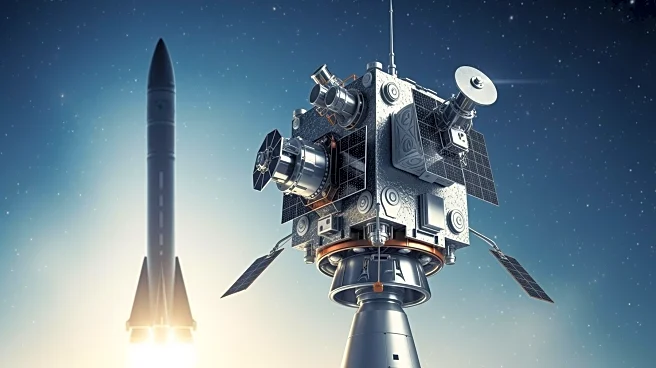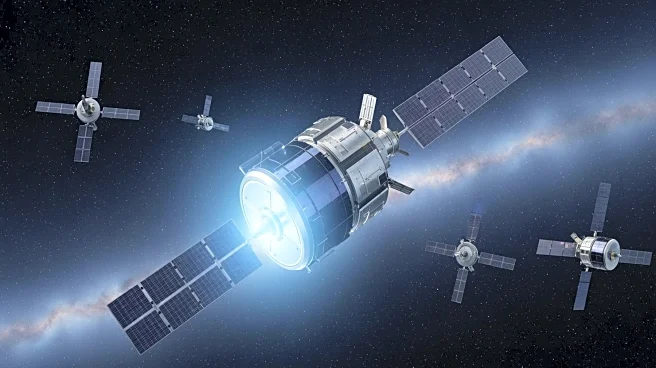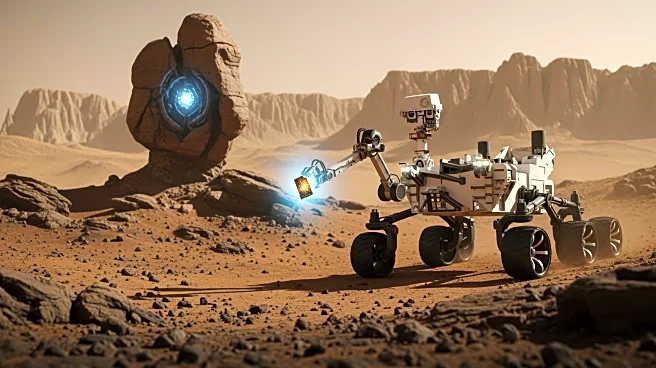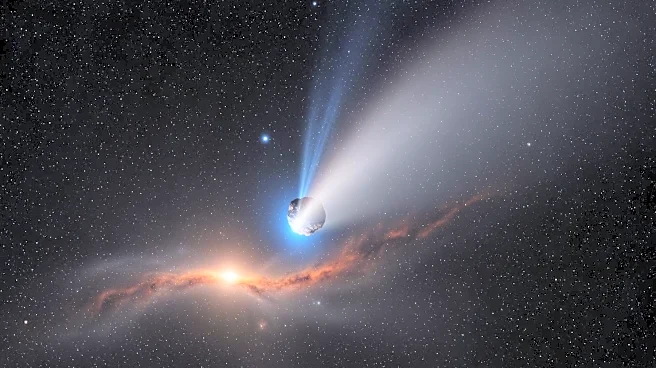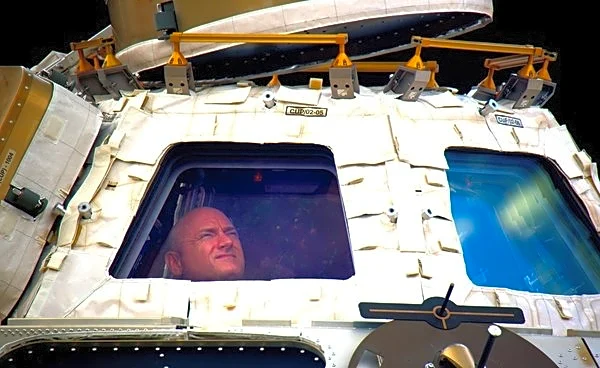What's Happening?
NASA is preparing to launch its ESCAPADE twin probes aboard Blue Origin's New Glenn rocket for a mission to Mars. Scheduled for November 2025, the mission aims to study Mars' magnetosphere and the interactions
between the planet's atmosphere and solar wind particles. The New Glenn rocket, currently stationed at Launch Complex-36A at Cape Canaveral Space Force Station in Florida, has completed preliminary engine tests. This mission marks New Glenn's second flight and its first interplanetary mission. The ESCAPADE mission, with a budget of $80 million, is NASA's first mission to Mars since the Perseverance rover launch in July 2020. The spacecraft were integrated onto the New Glenn rocket at Blue Origin's Titusville, Florida facility earlier in October.
Why It's Important?
The ESCAPADE mission is significant as it represents a collaborative effort between NASA and Blue Origin, highlighting the growing role of private companies in space exploration. The mission's success could pave the way for future interplanetary missions using commercial rockets, potentially reducing costs and increasing the frequency of such missions. The data collected by the ESCAPADE probes will enhance understanding of Mars' atmospheric dynamics and magnetic environment, contributing to the broader scientific knowledge necessary for future manned missions to Mars. Additionally, the mission includes a secondary payload from Viasat, part of NASA's Communications Services Project, which aims to advance networking capabilities for near-Earth satellites.
What's Next?
Following the launch, Blue Origin plans to attempt a recovery of New Glenn's first stage through a propulsive landing on a barge in the Atlantic Ocean. This will test the company's ability to reuse the rocket, a critical factor in reducing launch costs. The success of this recovery effort could influence future missions and the viability of New Glenn as a reliable vehicle for interplanetary travel. The mission's progress and outcomes will be closely monitored by both NASA and the commercial space industry, potentially impacting future collaborations and technological advancements in space exploration.
